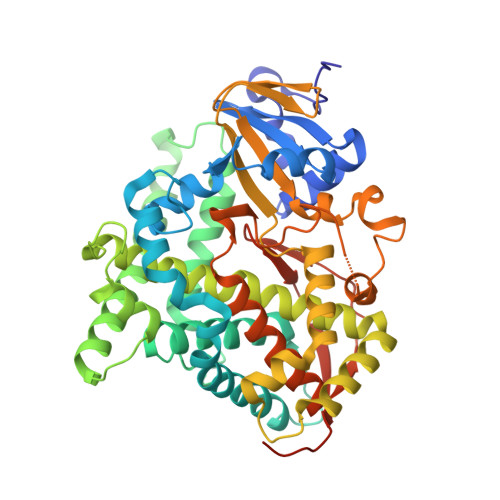Enantioselective, intermolecular benzylic C-H amination catalysed by an engineered iron-haem enzyme.
Prier, C.K., Zhang, R.K., Buller, A.R., Brinkmann-Chen, S., Arnold, F.H.(2017) Nat Chem 9: 629-634
- PubMed: 28644476
- DOI: https://doi.org/10.1038/nchem.2783
- Primary Citation of Related Structures:
5UCW - PubMed Abstract:
C-H bonds are ubiquitous structural units of organic molecules. Although these bonds are generally considered to be chemically inert, the recent emergence of methods for C-H functionalization promises to transform the way synthetic chemistry is performed. The intermolecular amination of C-H bonds represents a particularly desirable and challenging transformation for which no efficient, highly selective, and renewable catalysts exist. Here we report the directed evolution of an iron-containing enzymatic catalyst-based on a cytochrome P450 monooxygenase-for the highly enantioselective intermolecular amination of benzylic C-H bonds. The biocatalyst is capable of up to 1,300 turnovers, exhibits excellent enantioselectivities, and provides access to valuable benzylic amines. Iron complexes are generally poor catalysts for C-H amination: in this catalyst, the enzyme's protein framework confers activity on an otherwise unreactive iron-haem cofactor.
Organizational Affiliation:
Division of Chemistry and Chemical Engineering, California Institute of Technology, 1200 East California Boulevard, MC 210-41, Pasadena, California 91125, USA.















